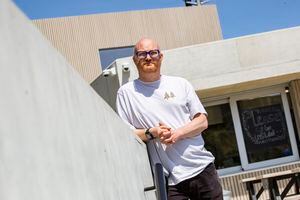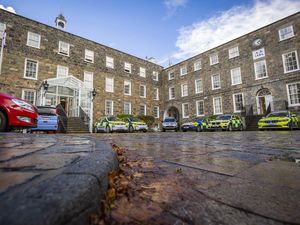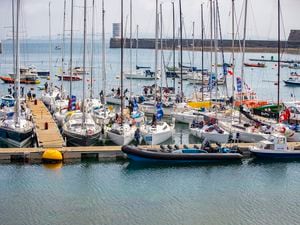Praise for the concept of La Vallette
A PROFESSOR of sustainable design has credited the La Vallette redevelopment for its regeneration with community at its centre.

James Norman visited the island to for an event hosted by the Channel Island Group of Professional Engineers, and spent the day sharing his experience and advice with local bodies.
A former structural engineer, Dr Norman has worked on a variety of high-profile projects, such as the £3bn development of Ferrari World in Abu Dhabi and the £3m. extension of the Tate Modern.
During his visit to the island, he complimented the attractions of the La Vallette redevelopment.
‘I think it’s beautiful and there are lots of elements that are aligned with re-generative mindsets, such as community involvement. Rather than it being designed and funded externally, it’s been designed and funded with the community involved,’ he said.
‘The concrete involves something called cement replacement, to reduce impact, as that is where the carbon is stored.’
A lot of Dr Norman’s work has involved more sustainable building design, using timber and earth in industry projects, and research into bamboo and lime concrete.
With concretes that could be made from carbon dioxide extracted from the atmosphere, construction would become a solution as opposed to the problem.
He acknowledged the impact that engineering has on the environment.
‘People get very passionate about flying planes, but the fact is that aviation causes 2.5% of global carbon emissions, whereas concrete is somewhere between 5% and 8%,’ he said.
‘I think it’s because flying less is something that we could all do to reduce our carbon footprint, or eat less meat, and I understand that, but as engineers, we specify huge amounts of carbon.’
The concrete at La Vallette is thought to have about 70% concrete replacement, and locally it is not unusual to see at least 50%.
Dr Norman began teaching full-time in 2015. ‘I realised that I could have a bigger impact by educating lots of people than just doing individual projects, and I realised that I had enough case studies to present to students rather than continuing to collect them,’ he said.
‘Our goal is to do no harm, which seems to be a low goal, but reality is we might not actually be achieving that on a global scale and we need to think creatively about new ways of designing buildings in a way to remove the negative impact.’
At the CIGPE event, Dr Norman discussed the progress with sustainable building designed so far, and what needs to happen next.
He also touched on what we can expect between now and 2050.





